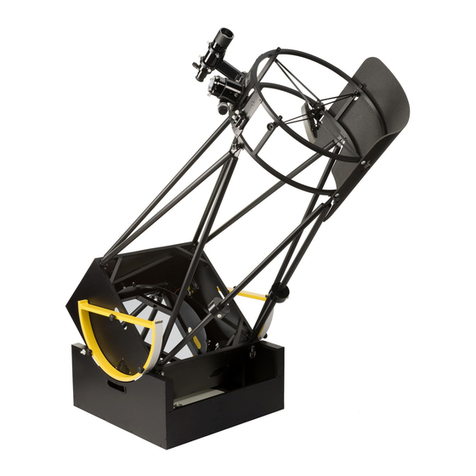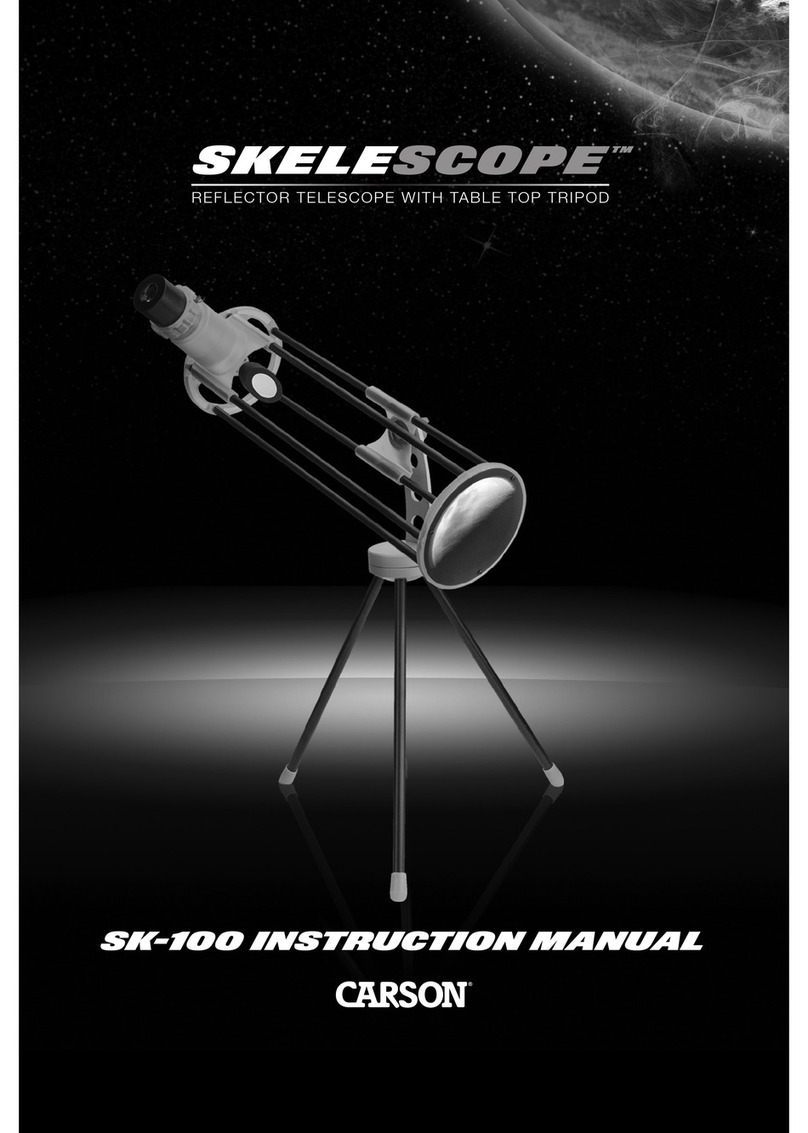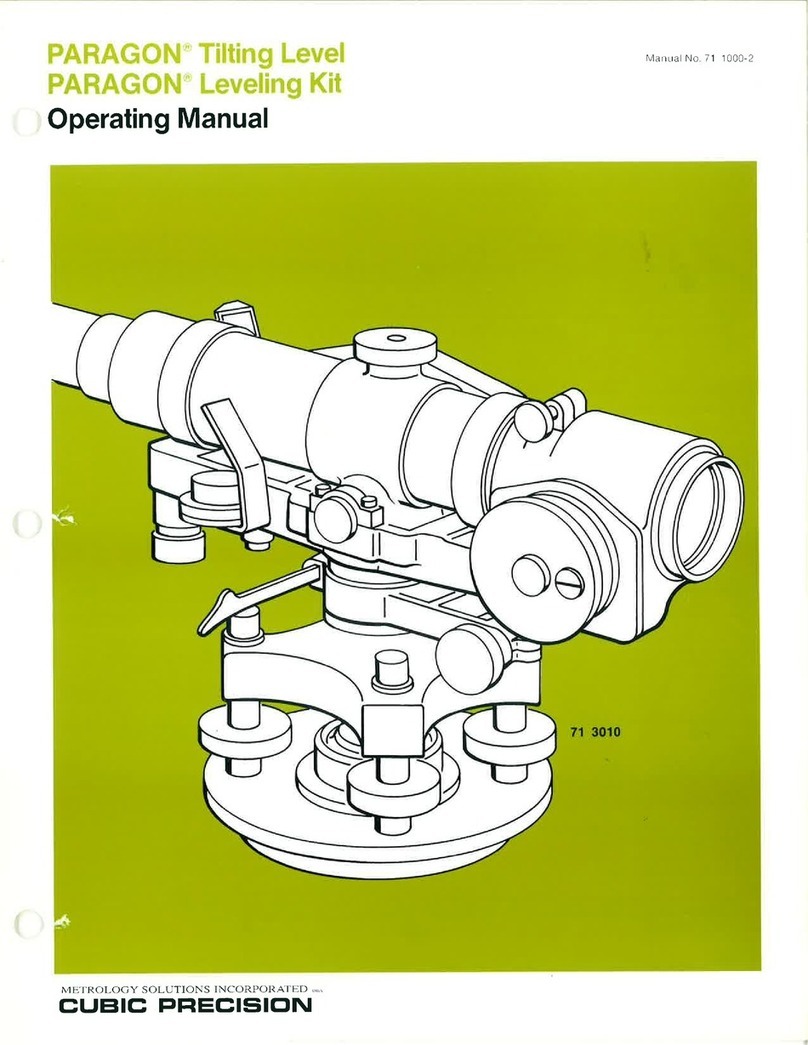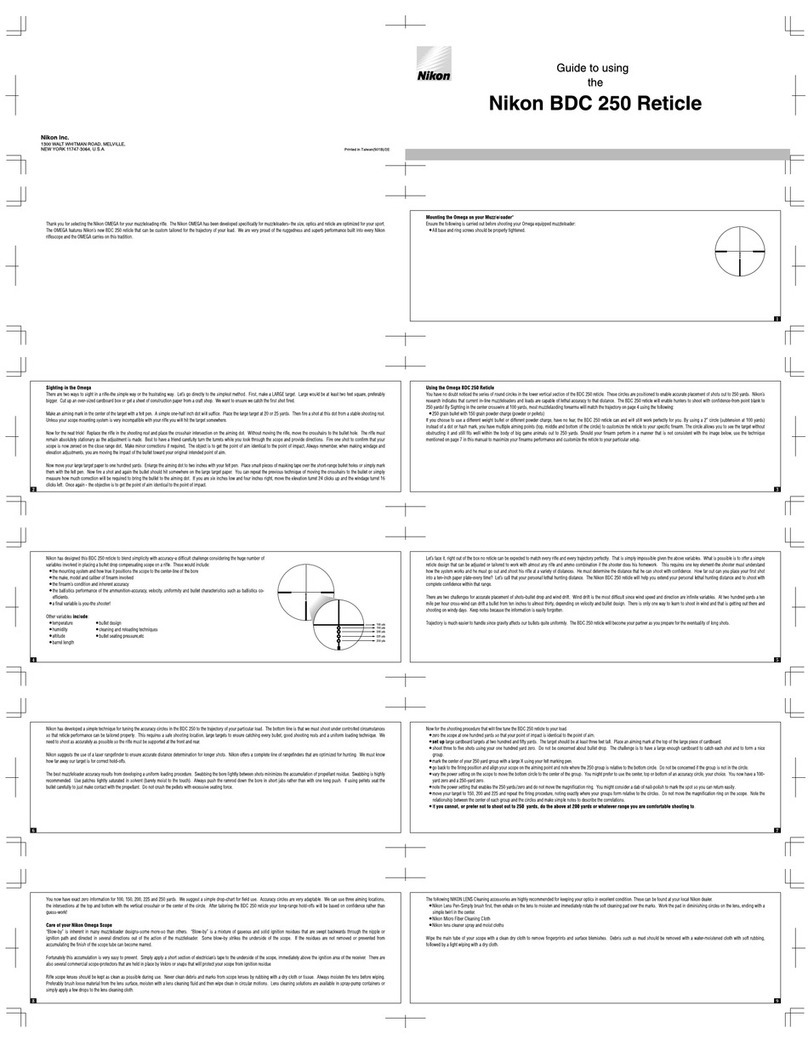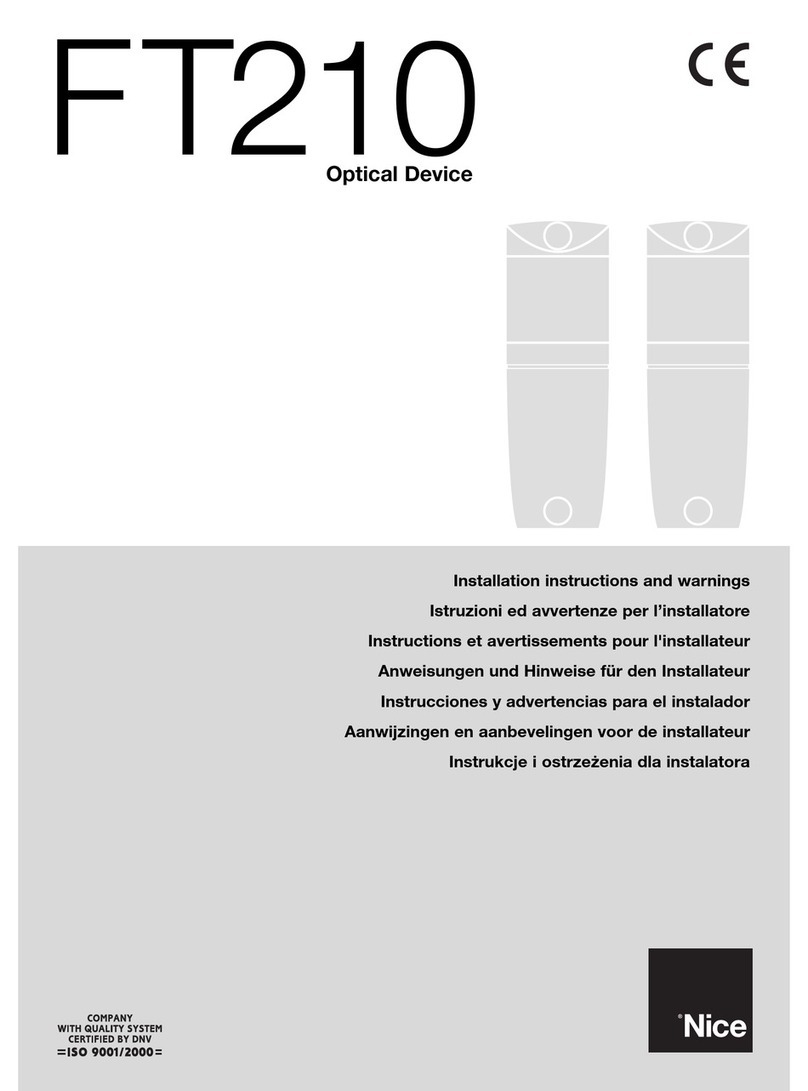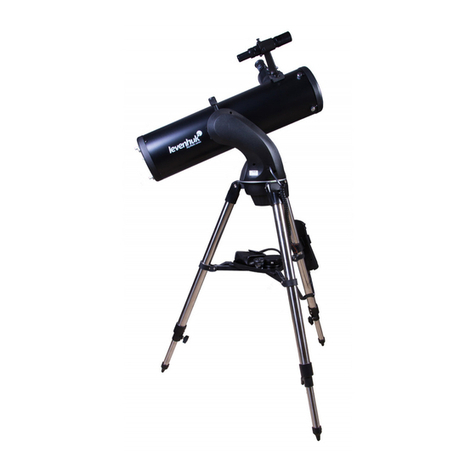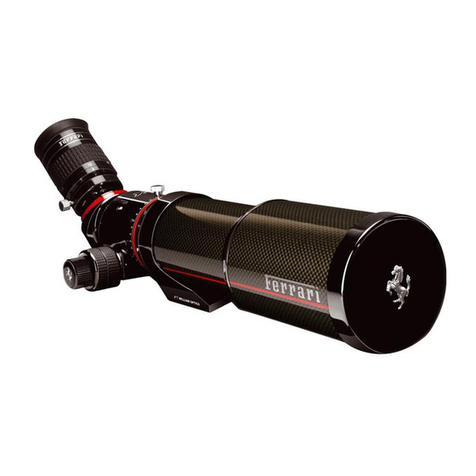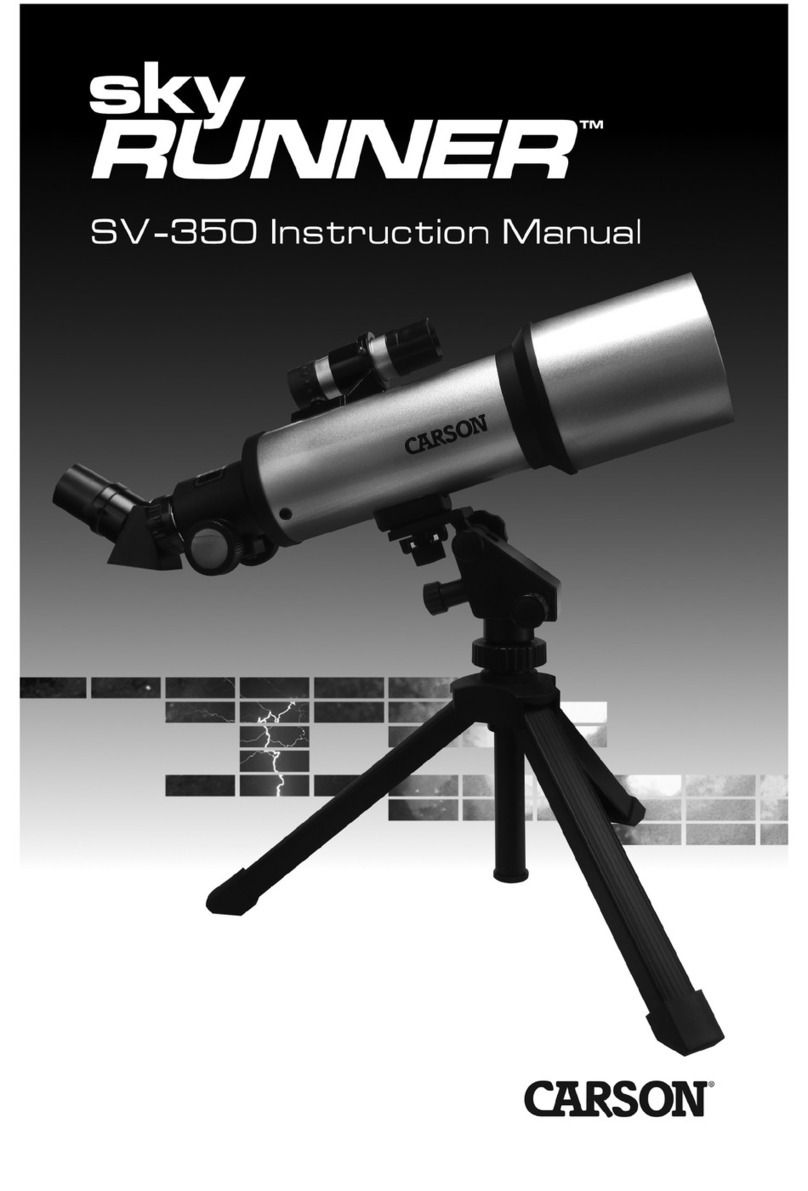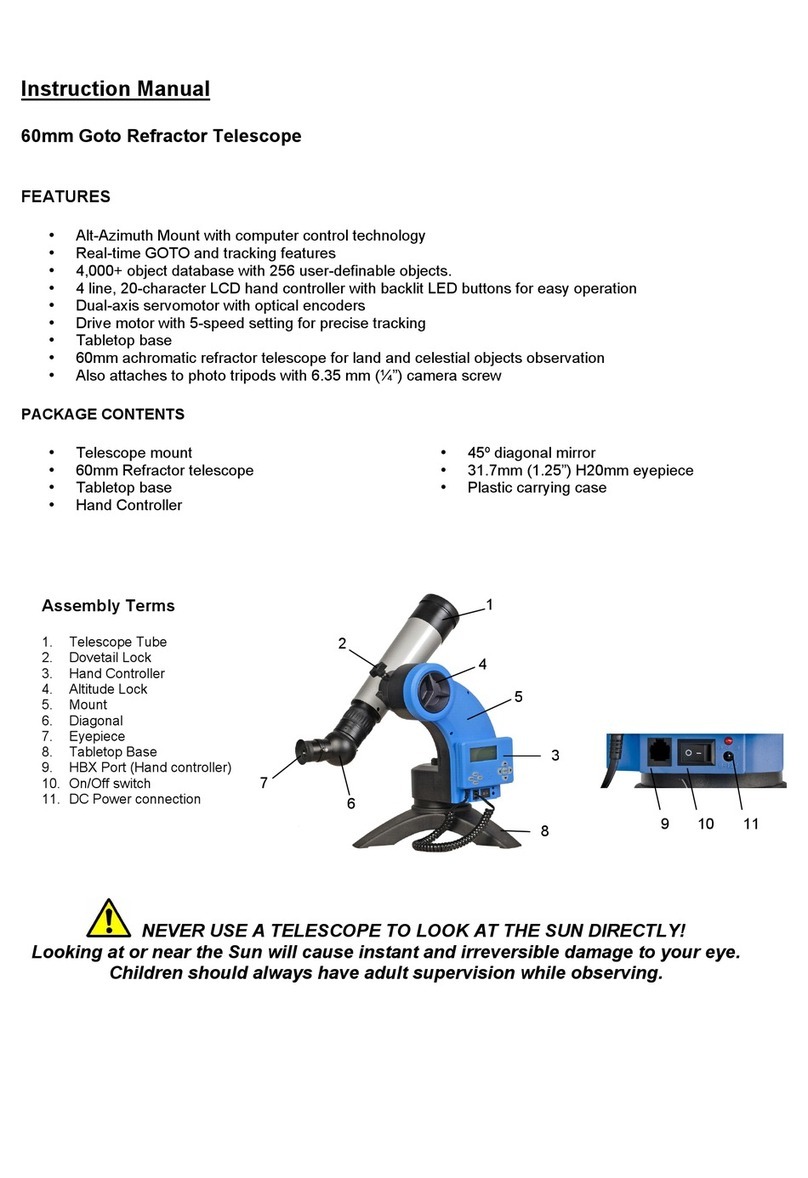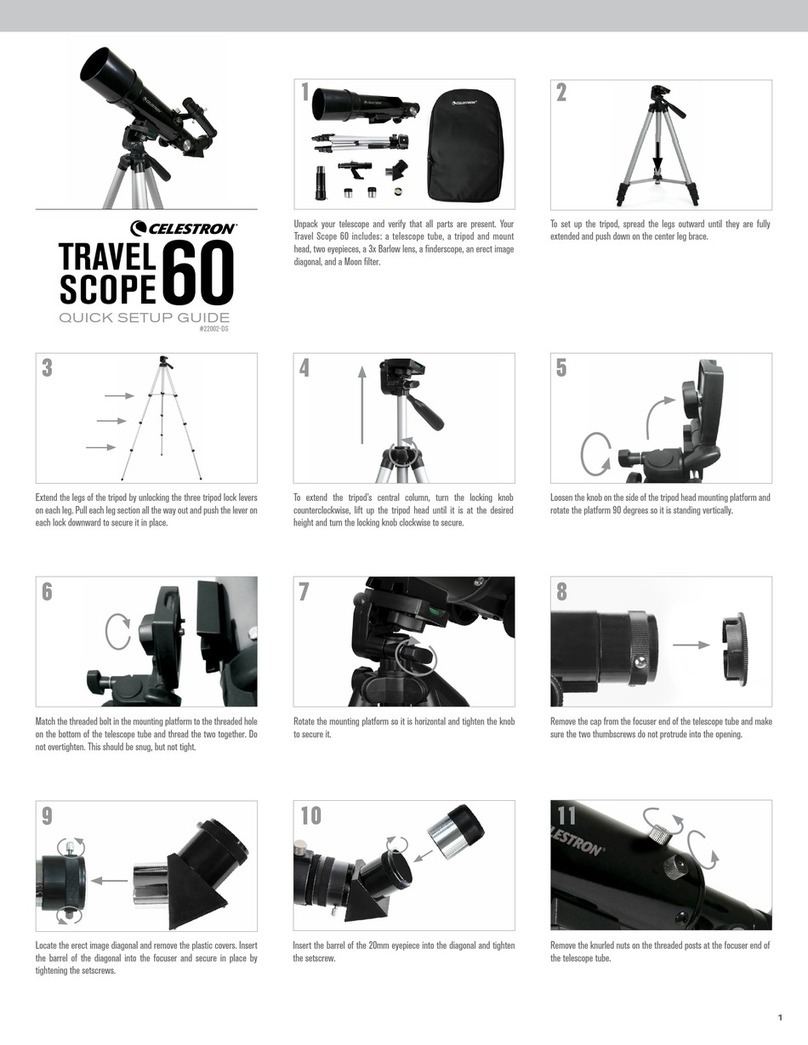Explore Scientific APOLLO COMBO SET User manual

1
WARNING :
SUN HAZARD
—
Never look directly
at the sun with this device.
!
AGES
10
+
APOLLO COMBO SET
40 mm Table Top Telescope &
900x Microscope Instruction Manual
Achromatic refractor
50 - 15x
40 mm
300 mm
6 mm and 20 mm
Blue
Table Top
5x, 20x, 45x
100x, 400x, 900x
Slides, Pipette, Scalpel,
Tweezers, SlideTray, Extra Slides,
Specimen Vials, Petri Dish,
Experimental Instructions
88-41101

2
Customer Service:
Call 1-866-252-3811
DISPOSAL
Dispose of the packaging materials properly,
according to their type, such as paper or
cardboard. Contact your local waste-disposal
service or environmental authority for
information on the proper disposal.
Please take the current legal regulations into
account when disposing of your device.
WARNING:
Never attempt to observe the sun with this telescope. Make sure children do not attempt to observe the sun with
the telescope. Observing the sun directly, even for a short time, may cause blindness.
Packing materials, like plastic bags, should be kept out of the reach of children.
Risk to your child!
Never look through this device directly at or near the sun. There
is a risk of BLINDING YOURSELF!
Children should only use this device under supervision. Keep
packaging materials, like plastic bags and rubber bands, out of
the reach of children, as they pose a choking hazard.
Fire and burn risk!
Never subject the device, especially the lenses, to direct
sunlight. Light ray concentration can cause fires and/or burns.
Risk of material damage!
Never take the device apart. Please consult Customer Service if
there are any defects. The dealer will contact our service center
and send the device in for repair if needed.
Do not subject the device to temperatures exceeding 140° F.
Tips on cleaning
Clean the lens (objective and eyepiece) only with a soft,
lint-free cloth, like a microfiber cloth. Do not use excessive
pressure - this may scratch the lens.
To clean a very dirty lens, dampen the cleaning cloth with
eyeglass cleaning solution, and wipe the lens gently.
Protect the device against dirt and dust. Leave it to dry properly
after use at room temperature. Then put the dust caps on and
store the device in a suitable location.
Respect privacy!
This device is meant for private use. Respect others‘ privacy.
Do not use the device to look into other people‘s homes, or
otherwise infiringe on their privacy.
Disposal
Dispose of the packaging material/s as legally required. Consult
the local authority on the matter if necessary.
Product Manual, Planisphere &
Astro Software Visit:
www.exploreone.com/pages/product-manuals

3
Customer Service:
Call 1-866-252-3811
List of parts:
Please check this list while
unpacking your telescope to ensure
all parts are present:
1. Focus Wheel
2. Diagonal Mirror
3. Eyepieces (6 mm, 20 mm)
4. Telescope Tube
5. Dew Shield
6. Objective Lens
7. Locating Screw For The Vertical
Adjustment
8. Locating Screw For The Ver-
tical Axis
9. Tripod Legs
(8) to locate and lock the position of an object
(to focus an object).
Which eyepiece is right?
First of all, it is important that you always choose
an eyepiece with the highest focal width for the
beginning of you observation. Afterwards, you
can gradually move to eyepieces with smaller
focal widths. The focal length is indicated in
millimeters, and is written on each eyepiece.
In general, the following is true: The larger
the focal width of an eyepiece, the smaller the
magnification! There is a simple formula for
calculating the magnification:
Focal length of the telescope tube: Focal length
of the eyepiece = magnification.
You see: The magnification is also depends
on the focal length of the telescope tube. This
telescope contains a telescope tube with focal
length of 300 mm. From this formula, we see
that if you use an eyepiece with a focal width of
20 mm, you will get the following magnification:
300 mm / 20 mm = 15 x magnification
Your Telescope
Please look for a suitable location
for your telescope before you begin.
Use a stable surface, e.g. a table.
Mount the telescope to the tripod
with the locating screw for the
vertical adjustment (7). Insert the
eye piece into the diagonal mirror
(6 mm or 20 mm).
Azimuthal Mounting
Azimuthal mounting just means
that you can move your telescope
up and down, left and right, without
having to adjust the tripod.
Use the locating screw for the
vertical fine adjustment (7) and the
locating screw for the vertical axis
To make things simpler. I’ve put together a
table with some magnifications:
Technical Data:
• Design: Achromatic
• Focal Length: 300 mm
• Objective Diameter: 40 mm
1
6
782
9
3
4
5
Telescope
Focal Width
Eyepiece
Focal Width
Magnification
300 mm 20 mm 15x
300 mm 6 mm 50x

4
Customer Service:
Call 1-866-252-3811
When talking about Orion, we‘re actually referring to the main part
of a much larger cloud of hydrogen gas and dust, which spreads
out over half of the Orion constellation. The expanse of this
enormous cloud stretches several hundred light years.
Ring Nebula (M 57)
M 57 in the Lyra constellation
Right ascension: 18:53 (Hours: Minutes)
Declination: -33:02 (Degrees: Minutes)
Distance from Earth: 2,400 light years
The famous Ring Nebula M 57 in the constellation of Lyra is often
viewed as the prototype of a planetary nebula; it is one of the
magnificent features of the Northern Hemisphere’s summer sky.
Recent studies have shown that it is probably comprised of a ring
(torus) of brightly shining material that surrounds the central star
(only visible with larger telescopes), and not of a gas structure
in the form of a sphere or an ellipsis. If you were to look at the
Ring Nebula from the side, it would look like the Dumbbell Nebula
(M27). When viewed from Earth, we are looking directly at the pole
of the nebula.
Dumbbell Nebula (M 27)
M 27 in the Fox constellation
Right ascension: 19:59.6 (Hours: Minutes)
Declination: -+22:43 (Degrees: Minutes)
Distance from Earth: 1,360 light years
The Dumbbell Nebula (M 27) in Fox was the first planetary nebula
ever discovered. On July 12, 1764, Charles Messier discovered this
new and fascinating class of objects. We see this nebula almost
directly from its equatorial plane. If we could see the Dumbbell
Nebula from one of its poles, we would see the shape of a ring,
and we would see something very similar to what we know as the
Ring Nebula (M 57). In reasonably good weather, we can see this
object well even with low magnifications.
Possible objects for observation:
The following section details several interesting and easy-to-find
celestial objects you may want to observe through your telescope. The
pictures at the end of the manual show what the objects will look like
through your telescope’s eyepiece.
Terrestrial objects
Take note of the examples below, including Mount Rushmore and the
golf course. Start with the 20 mm eyepiece and focus until the image
is clear. After mastering the 20 mm eyepiece, switch to the 6 mm
eyepiece and practice scanning and focusing until the image is clear.
Choose several terrestrial objects to practice focusing on, but never
point your telescope at or near the sun, or you risk blindness.
The Moon
The moon is the Earth’s only natural satellite.
Diameter: 3.476km
Distance from Earth: approx. 384,400 km (average)
The moon has been known to humans since prehistoric times. It is the
second brightest object in the sky (after the sun). Because the moon
circles the Earth once per month, the angle between the Earth, the
moon and the sun is constantly changing; one sees this change in the
phases of the moon. The time between two consecutive new moon
phases is about 29.5 days (709 hours).
Orion Nebula (M 42)
M 42 in the Orion constellation
Right ascension: 05:35 (Hours: Minutes)
Declination: -5:22 (Degrees: Minutes)
Distance from Earth: 1,500 light years
Located about 1,500 light years from Earth, the Orion Nebula (Messier
42, abbreviation: M 42) is the brightest diffuse nebula in the sky –
visible with the naked eye, and a worthwhile object for telescopes
of all types and sizes, from the smallest field glass to the largest
earthbound observatories and the Hubble Space Telescope.
f=20 mm f=6 mm
The Moon
Orion Nebula (M 42)
Ring Nebula in Lyra
constellation (M 57)
Dumbbell Nebula in the
Vulpecula (Fox)
constellation (M 27)
f=20 mm f=6 mm
Terrestrial Images
Celestial Images

5
Customer Service:
Call 1-866-252-3811
Telescope ABC’s
What do the following terms mean?
Diagonal:
A mirror that deflects rays of light 90 degrees. With a horizontal
telescope tube, this device deflects the light upwards so that you can
comfortably observe by looking downwards into the eyepiece. The
image in a diagonal mirror appears upright, but rotated around its
vertical axis (mirror image).
Focal Length:
Everything that magnifies an object via an optic lens has a certain focal
length (FL). The FL is the length of the path the light travels from the
surface of the lens to its focal point. The focal point is also referred to
as the focus. In focus, the image is clear. In a telescope, the FL of the
telescope tube and the eyepieces are combined.
Lens:
The lens turns the light which falls on it around in such a way so that
the light gives a clear image in the focal point after it has traveled a
certain distance (focal length).
Eyepiece:
An eyepiece is a system made for your eye and comprised of one or
more lenses. In an eyepiece, the clear image that is generated in the
focal point of a lens is captured and magnified even more.
There is a simple formula for calculating the magnification:
focal length of the telescope tube / focal length of the eyepiece =
magnification
In a telescope, the magnification depends on both the focal length of
the telescope tube and the focal length of the eyepiece.
Magnication:
The magnification corresponds to the difference between observation
with the naked eye and observation through a magnification apparatus
such as a telescope. In this formula, observation with the eye is
considered “single,” or 1x magnification. Accordingly, if a telescope
has a magnification of 30x, then an object viewed through the
telescope will appear 30 times larger than it would with the naked eye.
Troubleshooting:
Problem: Solution:
No picture Remove dust protection cap
and sun-shield from the
objective opening.
Blurred picture Adjust focus using focus
ring.
No focus possible Wait for temperature to
balance out.
Bad quality Never observe through a
glass surface such as a
window.
Viewing object visible Align finder to telescope
in the nder, but not
through the telescope
Despite using star The star diagonal prism
diagonal prism should be vertical in
the picture is “crooked” the eyepiece connection.
DISPOSAL
Dispose of the packaging materials properly,
according to their type (paper, cardboard, etc).
Contact your local waste disposal service or
environmental authority for information on the
proper disposal.

6
Customer Service:
Call 1-866-252-3811
List of parts:
Please check this list while
unpacking your telescope to ensure all parts are present:
1. 900x Microscope
2. 5 Prepared & 7 Blank Slides
3. 8 Slide Covers, 8 Slide Labels. 8 Slide Slips
4. Test Tube
5. 3 Specimen Vials
6. Pipette
7. Petri Dish
8. Tweezers
9. Scalpel
10. Blade
11. Stirring Rod
How do I observe the specimen?
Sitting in your location with adequate illumination chosen
from the color filter wheel, the following basic rules should
be observed: Start with a simple observation at the lowest
magnification. Position the object or specimen in the middle
of the stage under the stage clips, centered over the lower
light. Focus the image by rotating the focus knob until a
clear image appears in the eyepiece.
Place the prepared slide directly under the objective on the
microscope stage, and secure it with the stage clips. The
prepared slide should be located directly over the lower
illumination. Look through the eyepiece, and carefully turn
the focus knob until the image appears clear and sharp.
Now you can select a higher magnification by rotating to
the 20x/400x objective turret. Higher levels of magnification
can be achieved by turning the objective turret to a higher
setting (45x/900x). Following this procedure creates a
steady increase of magnification without overpowering the
view of the object. The following magnifications should be
How do I use my microscope?
Before you use your microscope, make sure that the table,
desk, or surface that you place it on is stable and is not
subject to vibration. If the microscope needs to be moved,
hold it by the arm and base while carefully transferring
it. Once the microscope is in a suitable location and the
batteries are installed, check the light source to make
sure that it illuminates. Use a microfiber cleaning cloth to
gently wipe the lenses off. If the stage is dirty with dust or
oil, carefully clean it off. Make sure that you only raise and
lower the stage using the focus adjustment knob.
How do I operate the illumination?
Locate the mirror/light on the base of the microscope. Flip
the mirror/light to the “on” position (with the light facing up)
and the light will illuminate. This microscope is equipped
with an incandescent light that illuminates the specimen
from below. The color filter wheel is located in the middle
of the microscope stage. The filters help you when you
are observing very bright or clear specimens. Using these
filters, you can choose various brightness levels and colors.
This helps you better recognize the components of color-
less or transparent objects (e.g. sea salt).
How do I adjust my microscope correctly?
Place the microscope in a suitable location as described
above, and sit in a comfortable viewing position. Always
start each observation with the lowest magnification. Adjust
the distance of the microscope stage so that the stage is
in the lowest position, farthest away from the turret head.
Turn the objective turret until it clicks into place at the
lowest magnification (Objective 5x/100x). Note: Before
you change the objective setting, always make sure the
microscope stage is farthest away from turret by rotating
the focus knob. Separating the stage and turret by rotating
the focus knob will avoid causing damage to the specimen
slide or microscope. When starting an observation, always
start with the 5x/100x objective in the rotating head.
1
2
3
4
5
6
7
8
9
10
11
Did you know?
The highest magnification is
not always the best for every
specimen!
Magnification Guide
Eyepiece Objective Power
100x
400x
900x
5x
20x
45x
20x
20x
20x
!WARNING:
CHOKING HAZARD:
– Small parts.
Not for children under 3 years.

7
Customer Service:
Call 1-866-252-3811
considered: 100x, 400x, then 900x. Each time the magni-
fication changes (due to the objective change), the image
sharpness must be readjusted with the focus knob. When
doing this, be careful because if you move the microscope
stage too quickly, the objective and the slide could come
into contact and cause damage to the slide or microscope.
For transparent objects (e.g. sea salt), light is projected
by the lower light traveling from below the stage, through
the objective and eyepiece, and finally into your eye. This
process of light transmission is known as microscopy.
Many micro-organisms found in water, plant components,
and the smallest animal parts are transparent in nature.
Opaque specimens, on the other hand, will need to be
prepared for viewing. Opaque specimens can be made
transparent by a process of treatment and penetration with
the correct materials (media), or by slicing. You can read
more about creating specimens in the following Microscope
Experiments booklet.
This device contains electronic components that are pow-
ered by batteries. Batteries should be kept out of children’s
reach. When inserting batteries, please ensure the polarity
is correct. Insert the batteries according to the displayed
+/- information.
DANGER OF FIRES AND EXPLOSIONS!
Do not expose the device to high temperatures. Use
only battery types recommended. Never mix old and new
batteries. Replace all batteries at the same time. Never
mix alkaline, standard carbon-zinc, and rechargeable
nickel-cadmium batteries. Never short circuit the device
or batteries or throw either into a fire. Exposure to high
temperatures or misuse of the device can lead to short
circuits, fires, or even explosions. Leaking or damaged
batteries can cause injury if they come into contact with
the skin. If you need to handle such batteries, please wear
suitable safety gloves.
CHEMICALS
Any chemicals and liquids used in conjunction with the
device should be kept out of reach of children. Do not drink
any of the chemicals contained in this set. Hands should
be washed thoroughly under running water after working
with these chemicals. In case of accidental contact with
eyes or mouth, rinse the affected area with water. Seek
medical treatment for ailments arising from contact with
the chemical substances, and take the chemicals with you
to the doctor.
RISK OF MATERIAL DAMAGE
Never take the device apart. Please consult our customer
service department and send the device in for repair if
needed.
Do not subject the device to temperatures exceeding
60 °C (140 °F).
TIPS ON CLEANING
Remove batteries from device before cleaning.
MICROSCOPE CARE
Clean the exterior of the device with a dry cloth. To avoid
causing damage to electrical components, do not use
cleaning fluids. Clean the lenses (objective and eyepiece)
with only a soft, lint-free cloth, like a microfiber cloth. Do
not use excessive pressure—this may scratch the lens.
Protect the device from dust and moisture. Store the device
in its original packaging. Batteries should be removed from
the device if it will not be used for a long period of time.
DISPOSAL
Keep packaging materials, like plastic bags and rubber
bands, away from children, as they pose a risk of suf-
focation.
Dispose of packaging materials as legally required. Consult
the local authority on the matter if necessary.
Cleaning Tips
To ensure your microscope has a long service life, clean the
lens (objective and eyepiece) with only a soft, lint-free cloth,
like a microfiber cloth. Do not press down too hard while
cleaning, as this might scratch the lens. Ask your parents
to help if your microscope is really dirty. The cleaning cloth
should be moistened with cleaning fluid and the lens wiped
clean using very little pressure. Make sure your microscope
is always protected against dust and dirt. After use, leave
it in a warm room to dry off.
WARNINGS AND SAFETY
Read and follow the instructions, safety rules, and first
aid information.
This microscope set is intended for children older than age
8. Children should only use this device under adult super-
vision. Never leave a child unsupervised with this device.
Accessories in this experimental kit may have sharp edges
and tips. Please store the device and all of its accessories
and aids out of the reach of young children when not being
used due to a risk of injury.
No recognizable image
No image
No light
Turn on light
Readjust focus
Start with the
lowest power objective (5x)
Center object on slide under
lowest power objective (5x)
Replace batteries
Check on/off position
Troubleshooting Table
Problem Solution

8
© 2017 Explore Scientific®, LLC.
1010 S 48th Street, Springdale, AR 72762
exploreone.com | 866.252.3811
All rights reserved. Made in China.
CONFORMS TO THE SAFETY
REQUIREMENTS OF ASTM F963
Table of contents
Other Explore Scientific Telescope manuals

Explore Scientific
Explore Scientific ED APO User manual
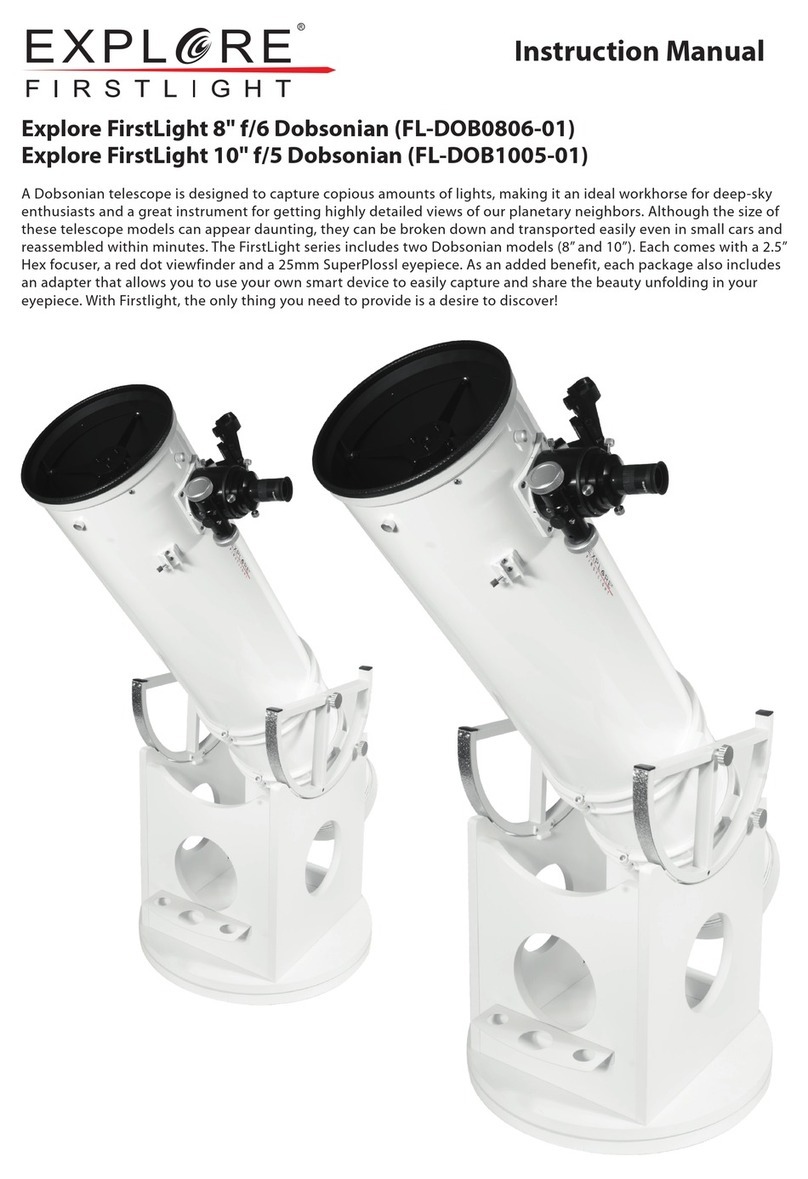
Explore Scientific
Explore Scientific FirstLight series User manual

Explore Scientific
Explore Scientific Photo-Newton PN-208 User manual
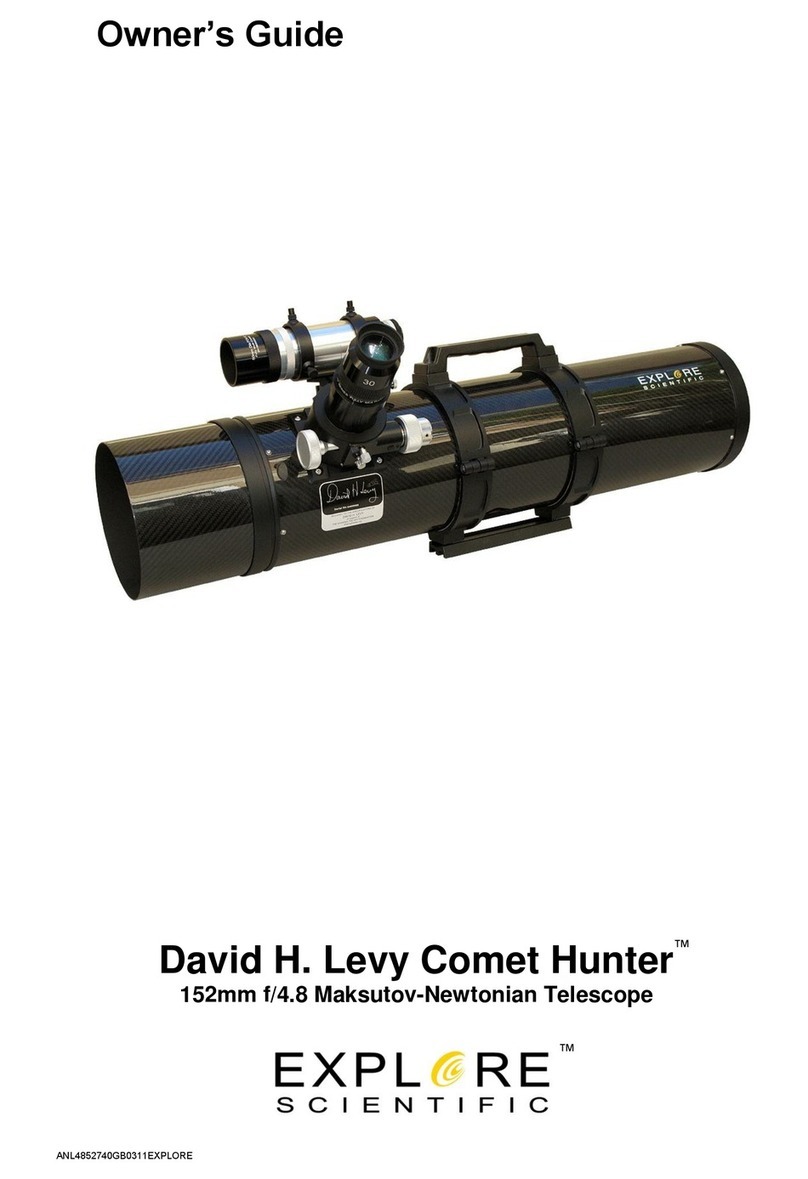
Explore Scientific
Explore Scientific David H. Levy Comet Hunter MN-152 User manual

Explore Scientific
Explore Scientific Truss-tube Dobsonian User manual
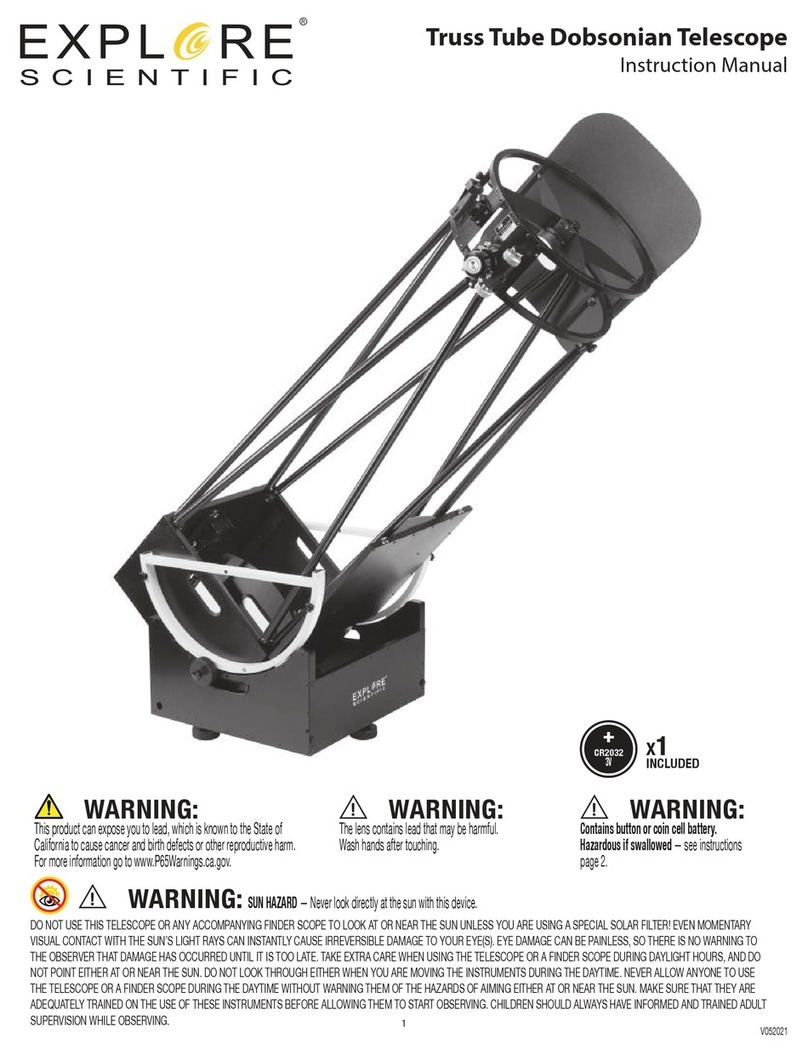
Explore Scientific
Explore Scientific DOB2036-00 User manual

Explore Scientific
Explore Scientific Truss Tube Dobsonian Series User manual
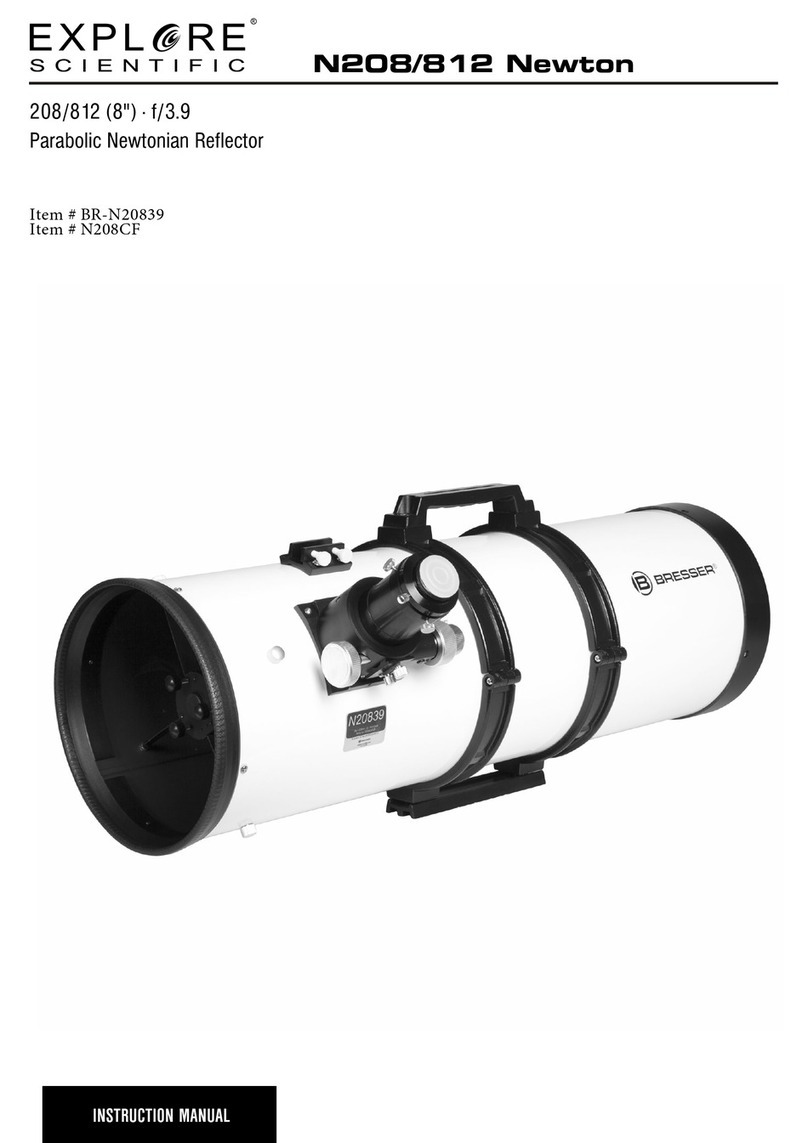
Explore Scientific
Explore Scientific N208/812 Newton User manual

Explore Scientific
Explore Scientific AR Doublet Series User manual

Explore Scientific
Explore Scientific David H. Levy Comet Hunter User manual

